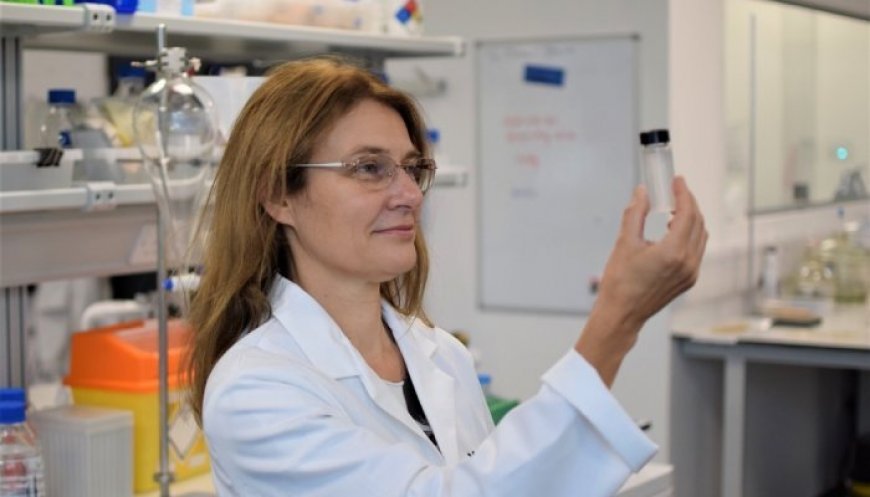Plant-based microcapsules offer beauty fresh fragrance promise
Plant-based microcapsules offer beauty fresh fragrance promise. Plant-based microcapsules developed by Cambridge University spin-out Xampla offer fantastic fragrance innovation opportunities, enabling scent blooms previously near-impossible to achieve, says the company’s principal scientist.

In January, 2024, Xampla raised US$7 million [EUR6.45 million] enabling it to push ahead with wider development of its next-generation plant-based materials, branded Morro. Made from an array of plant proteins, including pea and potato, the portfolio uses a patented technology to offer natural and fully biodegradable microcapsules, coatings, edible films and soluble films for the beauty, home care, nutrition, food and beverage industries. The microcapsule Morro product, specifically, is designed to replace synthetic encapsulation in beauty, home and nutraceutical formulations – eliminating potential use of microplastics.
“It could be a huge game-changer,” says Lynette Holland, principal scientist at Xampla.
Speaking to Premium Beauty News, Holland adds: “It’s not just replacing something that’s already there; it’s a new opportunity, particularly for brands where it’s very important that your signature fragrance is recognised.”
The fragrance ’halo effect’
These plant-based microcapsules, she says, enable formulators to encapsulate a portion of fragrance within any given formula so that it breaks up upon use, releasing a powerful scent ’bloom’. When used in a face or body cream, for example, the fragrance microcapsule will burst when the consumer rubs the product into their skin; in a conditioner when the product is massaged into hair; or in a deodorant when it is rolled onto the underarm skin.
“Fragrance itself has a huge halo effect on the performance of a product,” Holland says. “...Being able to give this bloom of fragrance gives a positive perception and contributes to the overall liking of a product. It actually helps with the performance of a product, so that is a huge game-changer. And being able to do that in a way that is plastic-free and biodegradable is a win-win.”
The plant-based microcapsules and entire Morro brand are the results of 15+ years of scientific research into proteins and biopolymers, Holland says, much of which was conducted by Professor Tuomas Knowles at the University of Cambridge. Over time, Xampla then developed these microcapsules for use across a vast and complex array of mixtures and ingredients in fragrance – often very “expensive, precious, fairly unstable materials” – meaning the perfumer’s palette remains intact, she says.
Holland explains that, previously, encapsulation of fragrances to create such a scent bloom was near impossible to achieve in beauty because most microcapsules were plastic-based and, understandably, brands wanted to avoid these in formulas directly applied to skin. Interest in the biodegradable and plant-based alternative from Morro, therefore, has been strong, she says.
“We have a lot of partnerships in place with some of the big brands, FMCG companies, who are very keen to make use of the microcapsules where it wasn’t possible before because there was nothing fully biodegradable. And consumers are really now asking for products which are truly sustainable; the industry is really being led by the consumer demand for these kind of products.”
Refining fine fragrance promise
Discussing whether the Morro microcapsules could be used in fine fragrance formulas, Holland says Xampla is working hard to refine this.
Current challenges in applying it to fine fragrance, she explains, are shelf-life and texture: ensuring the microcapsules contain and protect the fragrance particles for long enough in this type of formula and that it does not become ’sticky’.
“Our ultimate goal would be to have these capsules added to a traditional EDT/EDP [Eau de Toilette/Eau de Parfum] alcohol-based fragrance. That is technically very, very challenging to keep the fragrance inside the capsule, but that is our ultimate aim.”
In the meantime, Holland says the microcapsules work very well in water-based fragrances, as well as topical skin and body care formulations, hair conditioners and deodorants, both roll-on and aerosol.
’Supply and abundancy’ key for sourcing
Along with ongoing research in fine fragrances, she says Xampla is “constantly evolving” on the ingredient sourcing front.
“As we scale up, it’s very important to move to materials that are readily available and that aren’t competing with, for example, land use for food production. So, anything that is agricultural waste is interesting,” she says. “The technology we have is very versatile, it’s not specific to one plant.”
Xampla is currently working with Elemis, for example, on using waste from the company’s borage (starflower) production to develop films for its product sachet.
“Watch this space. The Morro brand which we’re developing is not just a single product; it’s not just microcapsules. At the moment, we have a portfolio with speciality microcapsules, for fragrances and other beauty actives; we have our nutraceutical and vitamin microcapsules; and we’re doing films and coatings. There are other applications we’re developing at lab-stage too – there is plenty of work in progress.”

 Phương Nhung
Phương Nhung 





